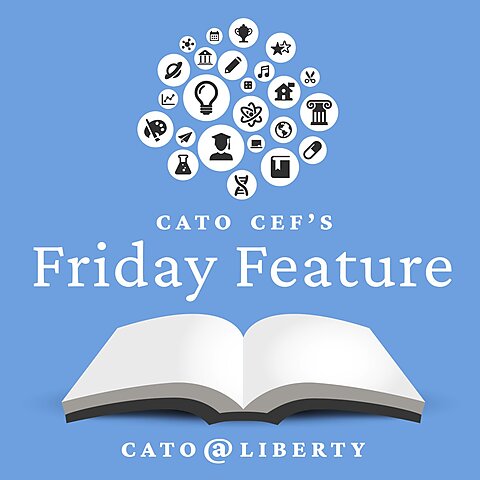
Friday Feature: CREATE Conservatory
Nikki Duslak says she never fit in as a public school teacher. “I have a background in theater—a bachelor’s degree in fine art and musical theater—and I always carried that love with me in the classroom. I was constantly doing crazy, off‐the‐wall things and other teachers would look at me like I had six heads,” she explains. “I had always had that passion to integrate art into my classroom, and I saw firsthand what it could do for students.”
She remembers sitting in the teachers’ room at lunch hearing people complain about the state of things. “If I was a school principal, I wouldn’t do things this way,” she thought. So, she went back to school and got her masters in educational leadership and policy studies. “I became a school principal, and I constantly found myself saying, ‘Gosh, this is awful. Someday I’m going to open my own school, and I’m going to do things differently.’”
But a “someday” dream doesn’t always become reality. “It was very challenging to even think about because there were so many loose ends. There is no handbook or guidebook; it’s different depending on what state you’re in. And it was just a very overwhelming thought,” Nikki says.
Eventually, it was her own child’s needs that gave Nikki the push she needed. Her son was reading at a third‐grade level and solving Algebra problems at age three, so she knew it was going to be tough to find the right school for him. After trying a few options—including having him in classes with 13‐year‐olds when he was five—Nikki realized it was time to start a new kind of school. The result is CREATE Conservatory, which opened in Florida in 2020.
“People think I’m kidding, but I’m not. I found a book called Nonprofits for Dummies, and I sat down with the book and a bottle of wine. I thought, ‘I don’t know how I’m going to do it, but I’m going to do it,’” she recalls. “I decided that the fear of what would happen if I tried to open the school was less than the fear of what was going to happen to him if I didn’t.”
Nikki’s public school career gave her a realization that the public system is about mass producing. “If you’re a mass production kind of student, then that might work great for you. If you’re the kind of student who can sit down and be quiet and listen—and you can show what you’ve learned through a very specific methodology—that system might work for you. But it doesn’t work for so many of our children,” she says.
What I was really trying to create was an environment where students were able to show what they know as opposed to being caught with what they don’t know. And an opportunity to teach children how to think; I believe so much of the modern education system has removed opportunities for children to think. We’re asking them to memorize information. We’re asking them to spit it back at us. But we’re not teaching them how to be critical thinkers. We’re not teaching them how to solve problems, especially how to solve problems creatively, which I believe is a massive part of your eventual success, whether it’s college or career or the workforce or military. Being able to look at a problem and solve it in a creative way is just something that doesn’t exist in the system right now. So for me that became, ‘How do I do that?’ I was immediately drawn back to all those times in a classroom where I saw arts integration be so wildly successful. And that was with students that you’d never think. I was teaching in a very rural, very low income school, and I was using arts integration.
Nikki and her team write the curriculum themselves. “I think part of why we don’t see arts integration as a more widespread methodology is because it is incredibly hard,” she says. “You have to have a really deep understanding of the arts. You have to have a very deep understanding of curriculum, curriculum writing, and scope and sequence. And you also have to have an incredible knowledge of your students who are in front of you. Because if you don’t have all three of those things, it’s not going to work.” Nikki uses Florida state standards as the basis and then finds ways to incorporate the arts into various topics.
“We don’t have textbooks here. We learn everything through videos or articles I find online,” Nikki says. “If we want to study the solar system, if we want to learn about space, why am I going to use a 10‐year‐old textbook when I can go to NASA’s website right now and we can talk about the comet they discovered this morning? We can pull it up on the screen and read the website right now. The kids feel like they’re cutting edge because they’re learning about it, and it just happened yesterday. And they’re excited about it.”
After the struggles of Nikki’s own gifted children trying to fit in a standard classroom, differentiation is a key aspect of CREATE. “The way that we differentiate here is either through content, product, or process,” she explains. She currently has 4th grade through 9th grade in one classroom, and she acknowledges that’s a challenge. She’ll do a group lesson on a subject and then break them into smaller groups to work on specific aspects at more individualized levels. This allows students to work on mastery at their ability level rather than an arbitrary metric based on their age.
Nikki has been approached about creating a curriculum that can be replicated in other schools, but she hasn’t figured out a way due to the creativity and personalization she incorporates throughout all of her classes. “I find that the curriculum piece is becoming that someday dream of mine. Someday when I have time, I’m going to sit down and flesh this out a bit because I do think it’s something that we need,” she says. Considering her last “someday” dream became a flourishing microschool that was a semifinalist for the Yass Prize, it’s probably safe to keep an eye out for her curriculum in the future.
When she first started planning CREATE, Nikki was a school choice skeptic because she saw the state as part of the problem when it came to public schools. But then she realized she would retain autonomy with Florida’s scholarship programs, so she now happily participates to ensure students in her rural, low‐income area can attend CREATE Conservatory.
“As adults, it’s rare that we have the opportunity to sit back and reflect on a decision that we made and be able to say I’m very proud of myself. But I do with this because I really was very opposed to it at the beginning. Then the more I sat down and read, the more I looked into it, and the more I talked to people, I thought, ‘Well, I think I was wrong about this. And I think if the school’s going to survive, we have to go this route.’ And so every day I’m thankful I was smart enough to realize that I didn’t know what I didn’t know and to change my opinion about it all,” she says. “I couldn’t be more thankful for Step Up and for AAA and for all the things that they do because we wouldn’t exist at this point without them.”



